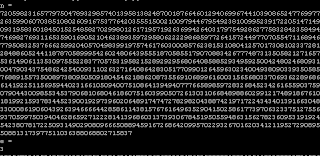In this problem, an encrypted data is given with an public key.
Using RSA python module, we can find information about RSA algorithms.
(or use command: openssl rsa -pubin -in id-rsa.pub -text)
The exponent number used is 3, which is very small. And increasing the risk of rsa. Observing that the encrypt message is related small too, this give us a clue to solve rsa.
According to RSA encrypt schema, the formula below
It can reduce to
With e=3, we can get following formula
Since we have value of M and N, while C is plain text we need to solve, only K is unknown. With small small M and e, we can consider N is related small.So we wrote a program which use brute force to find K. To check if the 3-rd root of C-KN is an integer, we can find the true K and the key.
from Crypto.PublicKey import RSA
from Crypto.Util import asn1
from base64 import b64decode
import libnum
import math
import gmpy
pubkey = open('id-rsa.pub').read()
key = RSA.importKey(pubkey)
print "n = "
print key.publickey().n
print "e = "
print key.publickey().e
nkey = key.publickey().n
message = open("enc.dat",'r').read()
print libnum.s2n(message[:-1])
ct = libnum.s2n(message.rstrip())
print libnum.len_in_bits(ct)
c = ct
k = 1
while True:
if k % 10000 == 0 :
print k
p = gmpy.root(c, 3)[0]
if pow(p,3,nkey)==ct:
print libnum.n2s(p)
break
c += nkey
k+=1





沒有留言:
張貼留言